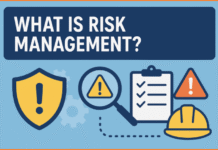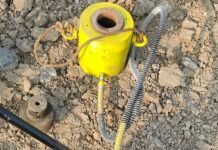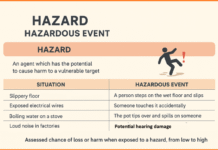Acetylene – Code of Safety
Acetylene (C₂H₂), also known as ethyne, is a highly flammable and reactive gas widely used in industrial operations. Approximately 80% of global acetylene production goes into chemical synthesis for manufacturing plastics, synthetic rubber, solvents, pharmaceuticals, and other compounds. The remaining 20% is utilized in oxy-acetylene welding, cutting, heat treatment, and as a fuel for specialized instruments.
Given its unstable nature under pressure, acetylene requires stringent safety measures in storage, handling, and use. The Indian Standard IS 14814:2000 (reaffirmed 2012) provides comprehensive safety guidelines, supported internationally by standards such as OSHA 29 CFR 1910.102, NFPA 51A, and Compressed Gas Association (CGA) guidelines.
Contents
Properties and Hazards of Acetylene
- Chemical Formula: C₂H₂
- Molecular Weight: 26.04
- CAS Number: 74-86-2
- Appearance: Colourless gas; commercial grade has garlic-like odour.
- Flammability: Highly flammable with explosive limits between 2.5%–82% in air.
- Auto-Ignition Temperature: ~305 °C
- Critical Risk: Unstable under pressure, decomposes violently into carbon and hydrogen.
Key Hazards:
- Risk of fire and explosion from leaks or improper handling.
- Forms explosive acetylides with copper, silver, or mercury.
- Acts as a simple asphyxiant at high concentrations.
Health Effects
- Inhalation: Causes dizziness, intoxication, narcosis, unconsciousness, and in extreme cases respiratory paralysis.
- Permissible Exposure Limits:
- OSHA PEL / NIOSH TLV: 2500 ppm
- Maximum safe workplace concentration (India): 5000 ppm (0.5%)
- Skin and Eye Contact: Not absorbed through skin; minor irritation to eyes possible.
Personal Protective Equipment (PPE)
- Safety goggles when inspecting cylinders.
- Leather gloves for manual handling.
- Self-contained breathing apparatus (SCBA) in areas with high gas concentrations.
- Flame-proof electrical tools and non-sparking hand tools (avoid copper alloys).
Safe Storage and Handling
Storage Guidelines
- Acetylene is stored dissolved in acetone in porous-mass filled cylinders to prevent decomposition.
- Store upright only, away from open flames and incompatible gases like oxygen.
- Maximum working pressure of acetylene cylinders (at 15 °C): 16 kgf/cm².
- Electrical fittings in storage areas must be flameproof (IS 2148 / IEC 60079).
Handling Precautions
- Avoid dropping, dragging, or rolling cylinders.
- Always use standard keys for operating valves; keep free from oil and grease.
- Do not open valves more than 1.5 turns.
- Use only with suitable regulators and flashback arrestors.
- Never attempt to transfer acetylene from one cylinder to another.
Transportation Safety
- Cylinders must be secured upright, cushioned from shocks, and protected from falling.
- Transport in approved vehicles only; motorcycles and two-wheelers are prohibited.
- Cylinders must not be transported with oxygen or other oxidizing/flammable gases.
- Valve protection caps must always be in place during transport.
Spillage, Leakage, and Waste Disposal
- Leaks must be detected using soap solution, never a flame.
- Cylinders with fusible plug leaks should be isolated outdoors, away from ignition sources, and allowed to vent slowly.
- Defective cylinders must be returned to suppliers; never tamper with safety devices.
Fire Prevention and Firefighting
- Prohibited: Smoking, open flames, matches, or ignition sources in acetylene areas.
- Extinguishing Agents:
- Carbon dioxide (CO₂) – effective for small fires.
- Water spray – for cooling exposed cylinders.
- Do not use water or soda-acid extinguishers on calcium carbide storage or acetylene generators.
- Fire protection must comply with NFPA 51A and Gas Cylinder Rules, 1981 (India).
Training and Health Monitoring
- Workers must receive training on hazards, safe handling, and emergency response.
- Safety induction should emphasize acetylene’s explosive potential.
- Employees must be familiar with fire alarms, extinguishers, and first-aid stations.
- Pre-employment medical checks are sufficient; no specific periodic monitoring is required.
First Aid
- Move exposed persons to fresh air immediately.
- Administer oxygen if breathing is difficult; artificial respiration if stopped.
- Call medical help urgently in all cases of high exposure.
Acetylene is invaluable in both industrial synthesis and metal working but poses significant risks due to its high reactivity and instability under pressure. Following the IS 14814:2000 safety code, along with international standards like OSHA 1910.102 and NFPA 51A, ensures safe storage, handling, and use of acetylene. Industries must prioritize PPE use, training, fire prevention measures, and strict compliance with gas cylinder rules to prevent catastrophic accidents.






Your blog is a testament to your dedication to your craft. Your commitment to excellence is evident in every aspect of your writing. Thank you for being such a positive influence in the online community.
Thank you so much. This information is very important to me.